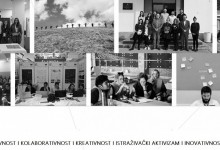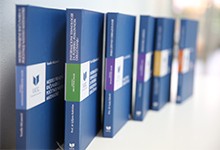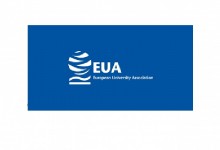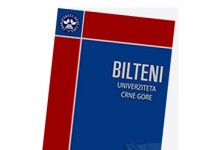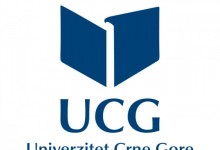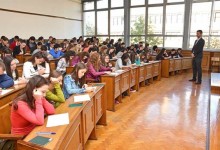Faculty of Architecture / ARCHITECTURA / MATHEMATICS
| Course: | MATHEMATICS/ |
| Course ID | Course status | Semester | ECTS credits | Lessons (Lessons+Exercises+Laboratory) |
| 4224 | Obavezan | 1 | 2.4 | 2+0+0 |
| Programs | ARCHITECTURA |
| Prerequisites | |
| Aims | |
| Learning outcomes | |
| Lecturer / Teaching assistant | |
| Methodology |
| Plan and program of work | |
| Preparing week | Preparation and registration of the semester |
| I week lectures | |
| I week exercises | |
| II week lectures | |
| II week exercises | |
| III week lectures | |
| III week exercises | |
| IV week lectures | |
| IV week exercises | |
| V week lectures | |
| V week exercises | |
| VI week lectures | |
| VI week exercises | |
| VII week lectures | |
| VII week exercises | |
| VIII week lectures | |
| VIII week exercises | |
| IX week lectures | |
| IX week exercises | |
| X week lectures | |
| X week exercises | |
| XI week lectures | |
| XI week exercises | |
| XII week lectures | |
| XII week exercises | |
| XIII week lectures | |
| XIII week exercises | |
| XIV week lectures | |
| XIV week exercises | |
| XV week lectures | |
| XV week exercises |
| Student workload | |
| Per week | Per semester |
| 2.4 credits x 40/30=3 hours and 12 minuts
2 sat(a) theoretical classes 0 sat(a) practical classes 0 excercises 1 hour(s) i 12 minuts of independent work, including consultations |
Classes and final exam:
3 hour(s) i 12 minuts x 16 =51 hour(s) i 12 minuts Necessary preparation before the beginning of the semester (administration, registration, certification): 3 hour(s) i 12 minuts x 2 =6 hour(s) i 24 minuts Total workload for the subject: 2.4 x 30=72 hour(s) Additional work for exam preparation in the preparing exam period, including taking the remedial exam from 0 to 30 hours (remaining time from the first two items to the total load for the item) 14 hour(s) i 24 minuts Workload structure: 51 hour(s) i 12 minuts (cources), 6 hour(s) i 24 minuts (preparation), 14 hour(s) i 24 minuts (additional work) |
| Student obligations | |
| Consultations | |
| Literature | |
| Examination methods | |
| Special remarks | |
| Comment |
| Grade: | F | E | D | C | B | A |
| Number of points | less than 50 points | greater than or equal to 50 points and less than 60 points | greater than or equal to 60 points and less than 70 points | greater than or equal to 70 points and less than 80 points | greater than or equal to 80 points and less than 90 points | greater than or equal to 90 points |
Faculty of Architecture / ARCHITECTURA / VISUALISATION AND MODELS II
| Course: | VISUALISATION AND MODELS II/ |
| Course ID | Course status | Semester | ECTS credits | Lessons (Lessons+Exercises+Laboratory) |
| 2523 | Obavezan | 2 | 2.8 | 1+2+0 |
| Programs | ARCHITECTURA |
| Prerequisites | No conditionality. |
| Aims | Acquiring basic knowledge of programming languages ArchiCAD, Photoshop and Power Point. Applied exercise with software packages AutoCAD and ArchiCAD. |
| Learning outcomes | It is expected that the student after passing the exam Visualization and models II: 1. To have the ability to present two-dimensional shapes in space, as well as their mutual relations; 2. To understand the space, the relationship between a human and space, object and its environment. |
| Lecturer / Teaching assistant | Marija Jevrić |
| Methodology | Lectures, exercises, obligatory consultations, field work through the study of formative expression tasks defined spatial units, individual work on homework. |
| Plan and program of work | |
| Preparing week | Preparation and registration of the semester |
| I week lectures | ArchiCAD - the basic elements of the package. ArchiCAD and the environment, workspace basics, sections, prospectus. |
| I week exercises | ArchiCAD - the basic elements of the package. ArchiCAD and the environment, workspace basics, sections, prospectus. |
| II week lectures | Tools, Palettes, adjust the working environment, tools, palettes, Info-window, Coordinate window. |
| II week exercises | Tools, Palettes, adjust the working environment, tools, palettes, Info-window, Coordinate window. |
| III week lectures | Editing and marking-Grid, controls Offsets, Command Modify, Text, and Find and select. |
| III week exercises | Editing and marking-Grid, controls Offsets, Command Modify, Text, and Find and select. |
| IV week lectures | Applied exercise with software packages AutoCAD and ArchiCAD. |
| IV week exercises | Applied exercise with software packages AutoCAD and ArchiCAD. |
| V week lectures | Presentation of the training software packages Power Point and Photoshop. |
| V week exercises | Presentation of the training software packages Power Point and Photoshop. |
| VI week lectures | Visual expression of concept - forms, analysis and synthesis of organization or level of architectural space, compositional elements and their organization - Interaction (study and analysis of three-dimensional space on a specific model defined architectu |
| VI week exercises | Visual expression of concept - forms, analysis and synthesis of organization or level of architectural space, compositional elements and their organization - Interaction (study and analysis of three-dimensional space on a specific model defined architectu |
| VII week lectures | I TEST |
| VII week exercises | |
| VIII week lectures | Applied practicing with software packages ArchiCAD, Photoshop and PowerPoint and |
| VIII week exercises | Applied practicing with software packages ArchiCAD, Photoshop and PowerPoint and |
| IX week lectures | the study of formative expression on tasks defined spatial units. |
| IX week exercises | the study of formative expression on tasks defined spatial units. |
| X week lectures | Observations and analysis-design architectural content; type of spatial patterns of the system; type |
| X week exercises | Observations and analysis-design architectural content; type of spatial patterns of the system; type |
| XI week lectures | spatial order architectural spatial composition, type forms the basic structural unit, its layouts and organization, |
| XI week exercises | spatial order architectural spatial composition, type forms the basic structural unit, its layouts and organization, |
| XII week lectures | architectural and spatial composition and system of organization, expressed through |
| XII week exercises | architectural and spatial composition and system of organization, expressed through |
| XIII week lectures | perceptual properties (primary: the size and shape, more complex quality: texture and color). Determination and analysis of regularity composition - compositional elements and principles of the organization - the order forms and relationships -(order, ord |
| XIII week exercises | perceptual properties (primary: the size and shape, more complex quality: texture and color). Determination and analysis of regularity composition - compositional elements and principles of the organization - the order forms and relationships -(order, ord |
| XIV week lectures | II TEST |
| XIV week exercises | |
| XV week lectures | Final exam |
| XV week exercises |
| Student workload | weekly 3.6 credits x 40/30 = 4 hours and 48 min in the semester 76 hours and 48 min(lecture) + 9 hours and 36 min(preparation) + 21 hours and 12 min(additional work) |
| Per week | Per semester |
| 2.8 credits x 40/30=3 hours and 44 minuts
1 sat(a) theoretical classes 0 sat(a) practical classes 2 excercises 0 hour(s) i 44 minuts of independent work, including consultations |
Classes and final exam:
3 hour(s) i 44 minuts x 16 =59 hour(s) i 44 minuts Necessary preparation before the beginning of the semester (administration, registration, certification): 3 hour(s) i 44 minuts x 2 =7 hour(s) i 28 minuts Total workload for the subject: 2.8 x 30=84 hour(s) Additional work for exam preparation in the preparing exam period, including taking the remedial exam from 0 to 30 hours (remaining time from the first two items to the total load for the item) 16 hour(s) i 48 minuts Workload structure: 59 hour(s) i 44 minuts (cources), 7 hour(s) i 28 minuts (preparation), 16 hour(s) i 48 minuts (additional work) |
| Student obligations | |
| Consultations | |
| Literature | Andy Rathbone, Windows XP za neupucene ( Hungry minds, Inc., 2001 ) Ellen Finkestein, kako upotrijebiti Power Point, 2003 Deke McClelland Barbara Obermeier, Photoshop za neupucene ( Hungry minds, Inc., 2002 ) George Omura, Mastering AutoCAD 2002, Premi |
| Examination methods | - Regular attendance of teaching - total 5 points (each absence - 1 point) - 2 homework - a total of 5 points (2.5 points each) - 2 test 30 points - a total of 60 points - graphic study (two) - a total of 30 points. The pass mark is obtained with at |
| Special remarks | Lectures are held in the amphitheater (for all enrolled). Exercises are performed in a group of 10 students. |
| Comment | Students are supplied complete/detailed program for teaching at the beginning of the semester. |
| Grade: | F | E | D | C | B | A |
| Number of points | less than 50 points | greater than or equal to 50 points and less than 60 points | greater than or equal to 60 points and less than 70 points | greater than or equal to 70 points and less than 80 points | greater than or equal to 80 points and less than 90 points | greater than or equal to 90 points |
Faculty of Architecture / ARCHITECTURA / MECHANICS AND STRENGHT OF MATERIALS
| Course: | MECHANICS AND STRENGHT OF MATERIALS/ |
| Course ID | Course status | Semester | ECTS credits | Lessons (Lessons+Exercises+Laboratory) |
| 1665 | Obavezan | 2 | 5.6 | 3+2+0 |
| Programs | ARCHITECTURA |
| Prerequisites | |
| Aims | |
| Learning outcomes | |
| Lecturer / Teaching assistant | |
| Methodology |
| Plan and program of work | |
| Preparing week | Preparation and registration of the semester |
| I week lectures | |
| I week exercises | |
| II week lectures | |
| II week exercises | |
| III week lectures | |
| III week exercises | |
| IV week lectures | |
| IV week exercises | |
| V week lectures | |
| V week exercises | |
| VI week lectures | |
| VI week exercises | |
| VII week lectures | |
| VII week exercises | |
| VIII week lectures | |
| VIII week exercises | |
| IX week lectures | |
| IX week exercises | |
| X week lectures | |
| X week exercises | |
| XI week lectures | |
| XI week exercises | |
| XII week lectures | |
| XII week exercises | |
| XIII week lectures | |
| XIII week exercises | |
| XIV week lectures | |
| XIV week exercises | |
| XV week lectures | |
| XV week exercises |
| Student workload | |
| Per week | Per semester |
| 5.6 credits x 40/30=7 hours and 28 minuts
3 sat(a) theoretical classes 0 sat(a) practical classes 2 excercises 2 hour(s) i 28 minuts of independent work, including consultations |
Classes and final exam:
7 hour(s) i 28 minuts x 16 =119 hour(s) i 28 minuts Necessary preparation before the beginning of the semester (administration, registration, certification): 7 hour(s) i 28 minuts x 2 =14 hour(s) i 56 minuts Total workload for the subject: 5.6 x 30=168 hour(s) Additional work for exam preparation in the preparing exam period, including taking the remedial exam from 0 to 30 hours (remaining time from the first two items to the total load for the item) 33 hour(s) i 36 minuts Workload structure: 119 hour(s) i 28 minuts (cources), 14 hour(s) i 56 minuts (preparation), 33 hour(s) i 36 minuts (additional work) |
| Student obligations | |
| Consultations | |
| Literature | |
| Examination methods | |
| Special remarks | |
| Comment |
| Grade: | F | E | D | C | B | A |
| Number of points | less than 50 points | greater than or equal to 50 points and less than 60 points | greater than or equal to 60 points and less than 70 points | greater than or equal to 70 points and less than 80 points | greater than or equal to 80 points and less than 90 points | greater than or equal to 90 points |
Faculty of Architecture / ARCHITECTURA / STATICS OF CONSTRUCTION
| Course: | STATICS OF CONSTRUCTION/ |
| Course ID | Course status | Semester | ECTS credits | Lessons (Lessons+Exercises+Laboratory) |
| 4362 | Obavezan | 3 | 3.2 | 2+1+0 |
| Programs | ARCHITECTURA |
| Prerequisites | No prerequisites. |
| Aims | Acquiring the basic knowledge from the Statics of structures. |
| Learning outcomes | |
| Lecturer / Teaching assistant | Ljiljana Žugić |
| Methodology | Lectures, calculation exercises, consultations. |
| Plan and program of work | |
| Preparing week | Preparation and registration of the semester |
| I week lectures | Introduction. Statical scheme of the structure, loading, external and internal forces. |
| I week exercises | Introduction. Statical scheme of the structure, loading, external and internal forces |
| II week lectures | Basic equations of the technical theory of bending of beams. Deformations. Equilibrium equations. Relations between deformation quantities, forces and temperature changes. |
| II week exercises | Basic equations of the technical theory of bending of beams. Deformations. Equilibrium equations. Relations between deformation quantities, forces and temperature changes. |
| III week lectures | Planar beam structures, definitions and classifications. Simple beam. |
| III week exercises | Planar beam structures, definitions and classifications. Simple beam. |
| IV week lectures | Cantilever beam. Beam with overhangs. The arch with three joints.. |
| IV week exercises | Cantilever beam. Beam with overhangs. The arch with three joints.. |
| V week lectures | Chain systems. Decomposition method. Trusses. |
| V week exercises | Chain systems. Decomposition method. Trusses. |
| VI week lectures | Influential lines. Influence line for a simple beam, cantilever beam and beam with overhangs. |
| VI week exercises | Influential lines. Influence line for a simple beam, cantilever beam and beam with overhangs. |
| VII week lectures | I COLLOQUIUM |
| VII week exercises | |
| VIII week lectures | Energy theorems. The Principle of virtual forces. Calculation of displacements. |
| VIII week exercises | Energy theorems. The Principle of virtual forces. Calculation of displacements. |
| IX week lectures | Statically indeterminate beams. Method of forces. |
| IX week exercises | Statically indeterminate beams. Method of forces. |
| X week lectures | Continuous beams. Symmetrical beams with symmetric and antisymmetric load. |
| X week exercises | Continuous beams. Symmetrical beams with symmetric and antisymmetric load. |
| XI week lectures | Planar structures. The fundamental items of the theory of plates. |
| XI week exercises | Planar structures. The fundamental items of the theory of plates. |
| XII week lectures | Basic items of the theory of shells. |
| XII week exercises | Basic items of the theory of shells. |
| XIII week lectures | Current computer programs application in problems of the statics of structures. |
| XIII week exercises | Current computer programs application in problems of the statics of structures. |
| XIV week lectures | II COLLOQUIUM |
| XIV week exercises | |
| XV week lectures | Final exam. |
| XV week exercises |
| Student workload | Weekly 4 credits x 40/30 = 5 hours and i 33 min. During semester 88 hours and 8 min (lectures) + 11 hours and 6 min (preparation) + 20 hours and 46 min (additional hours) = 120 hours |
| Per week | Per semester |
| 3.2 credits x 40/30=4 hours and 16 minuts
2 sat(a) theoretical classes 0 sat(a) practical classes 1 excercises 1 hour(s) i 16 minuts of independent work, including consultations |
Classes and final exam:
4 hour(s) i 16 minuts x 16 =68 hour(s) i 16 minuts Necessary preparation before the beginning of the semester (administration, registration, certification): 4 hour(s) i 16 minuts x 2 =8 hour(s) i 32 minuts Total workload for the subject: 3.2 x 30=96 hour(s) Additional work for exam preparation in the preparing exam period, including taking the remedial exam from 0 to 30 hours (remaining time from the first two items to the total load for the item) 19 hour(s) i 12 minuts Workload structure: 68 hour(s) i 16 minuts (cources), 8 hour(s) i 32 minuts (preparation), 19 hour(s) i 12 minuts (additional work) |
| Student obligations | |
| Consultations | |
| Literature | Slavko Ranković, Građevinski fakultet u Beogradu. |
| Examination methods | Regular attendence max 3 points - tests and graphics works max 8 points - colloquiums max (2x 20.0) points - Final exam 49.0 points |
| Special remarks | Lectures are conducted for the group of up to 30 students, tutorials in groups of 15 students. |
| Comment | Additional informations about the course may be obtained from the course lecturer, head of the study programme, or the vice dean for studies |
| Grade: | F | E | D | C | B | A |
| Number of points | less than 50 points | greater than or equal to 50 points and less than 60 points | greater than or equal to 60 points and less than 70 points | greater than or equal to 70 points and less than 80 points | greater than or equal to 80 points and less than 90 points | greater than or equal to 90 points |
Faculty of Architecture / ARCHITECTURA / ARCHITECTURAL PHYSICS
| Course: | ARCHITECTURAL PHYSICS/ |
| Course ID | Course status | Semester | ECTS credits | Lessons (Lessons+Exercises+Laboratory) |
| 2518 | Obavezan | 4 | 2.4 | 1+2+0 |
| Programs | ARCHITECTURA |
| Prerequisites | No prerequisites. |
| Aims | Analysis of thermal protection of buildings. The wider context and influences: Elements of climatology, the parameters of solar radiation. The application of heat insulation of the external building structures: form factor, the calculation of thermal and water vapor diffusion. Issues thermal bridges - design details. |
| Learning outcomes | It is expected that the student after passing the architectural physics: 1. Knows and uses the principles of designing optimal visual, thermal and acoustic environments, and according to the principles of sustainable development .; 2. Has the ability to synthetically uses the knowledge of the constructive and special topics, as well as knowledge of current technology in the design process; 3. Has adequate knowledge of the physical properties and characteristics of building materials, components and systems, as well as the influence of the same choices on the environment. |
| Lecturer / Teaching assistant | Dušan Vuksanović |
| Methodology | Lectures, consultations. |
| Plan and program of work | |
| Preparing week | Preparation and registration of the semester |
| I week lectures | Introductory lecture: concepts, goals, current status of the discipline in the world and in our country. |
| I week exercises | Introductory lecture: concepts, goals, current status of the discipline in the world and in our country. |
| II week lectures | Sources and development of architectural physics (energy aspects and aspects of thermal comfort). |
| II week exercises | Sources and development of architectural physics (energy aspects and aspects of thermal comfort). |
| III week lectures | Climatology, urban parameters of thermal protection: solar geometry, shadow and orientation. |
| III week exercises | Climatology, urban parameters of thermal protection: solar geometry, shadow and orientation. |
| IV week lectures | Climate impacts and aspects of the thermal response of buildings: control of heat losses and gains in the building, form factor, principles of thermal protection. |
| IV week exercises | Climate impacts and aspects of the thermal response of buildings: control of heat losses and gains in the building, form factor, principles of thermal protection. |
| V week lectures | The terms and the size of the analysis of thermal insulation. |
| V week exercises | The terms and the size of the analysis of thermal insulation. |
| VI week lectures | Calculation of coefficient of heat transfer, the principles of the calculation in relation to hydro-insulation and ventilated air layer. |
| VI week exercises | Calculation of coefficient of heat transfer, the principles of the calculation in relation to hydro-insulation and ventilated air layer. |
| VII week lectures | Design principles of thermal insulation: the problems of thermal bridges. |
| VII week exercises | Design principles of thermal insulation: the problems of thermal bridges. |
| VIII week lectures | 1st TEST (colloquium) |
| VIII week exercises | |
| IX week lectures | The terms and the size of the analysis of water vapor diffusion. |
| IX week exercises | The terms and the size of the analysis of water vapor diffusion. |
| X week lectures | Calculation of water vapor diffusion: Checking physiological criteria and calculation of pressures of water vapor. |
| X week exercises | Calculation of water vapor diffusion: Checking physiological criteria and calculation of pressures of water vapor. |
| XI week lectures | Diagram of diffusion, the principles of preventing condensation. |
| XI week exercises | Diagram of diffusion, the principles of preventing condensation. |
| XII week lectures | Problems of water vapor diffusion factor of stability and structure for the summer period, the advantages of ventilated structures. |
| XII week exercises | Problems of water vapor diffusion factor of stability and structure for the summer period, the advantages of ventilated structures. |
| XIII week lectures | Elaboration of a semster paper: details and calculation. |
| XIII week exercises | Elaboration of a semster paper: details and calculation. |
| XIV week lectures | Elaboration of a term paper: details and calculation. 2nd TEST (colloquium) |
| XIV week exercises | Elaboration of a term paper: details and calculation. 2nd TEST (colloquium) |
| XV week lectures | FINAL EXAM. |
| XV week exercises |
| Student workload | Weekly 2.4 credits x 40/30 = 3 hours and 20 minutes. During the semester: 51 hours and 12 minutes (lectures) + 6 hours and 24min (prep.) + 14 hours and 24 minutes |
| Per week | Per semester |
| 2.4 credits x 40/30=3 hours and 12 minuts
1 sat(a) theoretical classes 0 sat(a) practical classes 2 excercises 0 hour(s) i 12 minuts of independent work, including consultations |
Classes and final exam:
3 hour(s) i 12 minuts x 16 =51 hour(s) i 12 minuts Necessary preparation before the beginning of the semester (administration, registration, certification): 3 hour(s) i 12 minuts x 2 =6 hour(s) i 24 minuts Total workload for the subject: 2.4 x 30=72 hour(s) Additional work for exam preparation in the preparing exam period, including taking the remedial exam from 0 to 30 hours (remaining time from the first two items to the total load for the item) 14 hour(s) i 24 minuts Workload structure: 51 hour(s) i 12 minuts (cources), 6 hour(s) i 24 minuts (preparation), 14 hour(s) i 24 minuts (additional work) |
| Student obligations | |
| Consultations | |
| Literature | - Popovic-Jovanovic M.: “Zdravo stanovanje”, Arhitektonika, Arhitektonski fakultet Univerziteta u Beogradu, Beograd, 1991. - JUS U.J5.: 600, 510, 520, 530 - Pucar M., Pajevic M., Jovanovic Popovic M.: “Bioklimatsko planiranje i projektovanje – urbanisti |
| Examination methods | - Regular atendance in classes: 4 - 6 points - 4 semester graphic work: 13-24 points - 2 tests: 34 - 70 points - Final exam: ≤ 50 points - The passing grade: min. 51 points |
| Special remarks | Classes are held for a group of up to 20 students. Lectures could be in english language. |
| Comment | Additional information can be obtained from the subject teacher, head of the study program and Vice dean for Education. |
| Grade: | F | E | D | C | B | A |
| Number of points | less than 50 points | greater than or equal to 50 points and less than 60 points | greater than or equal to 60 points and less than 70 points | greater than or equal to 70 points and less than 80 points | greater than or equal to 80 points and less than 90 points | greater than or equal to 90 points |
Faculty of Architecture / ARCHITECTURA / MASONARY AND CONCRETE STRUCTURES
| Course: | MASONARY AND CONCRETE STRUCTURES/ |
| Course ID | Course status | Semester | ECTS credits | Lessons (Lessons+Exercises+Laboratory) |
| 4406 | Obavezan | 4 | 4.2 | 2+2+0 |
| Programs | ARCHITECTURA |
| Prerequisites | |
| Aims | |
| Learning outcomes | |
| Lecturer / Teaching assistant | |
| Methodology |
| Plan and program of work | |
| Preparing week | Preparation and registration of the semester |
| I week lectures | |
| I week exercises | |
| II week lectures | |
| II week exercises | |
| III week lectures | |
| III week exercises | |
| IV week lectures | |
| IV week exercises | |
| V week lectures | |
| V week exercises | |
| VI week lectures | |
| VI week exercises | |
| VII week lectures | |
| VII week exercises | |
| VIII week lectures | |
| VIII week exercises | |
| IX week lectures | |
| IX week exercises | |
| X week lectures | |
| X week exercises | |
| XI week lectures | |
| XI week exercises | |
| XII week lectures | |
| XII week exercises | |
| XIII week lectures | |
| XIII week exercises | |
| XIV week lectures | |
| XIV week exercises | |
| XV week lectures | |
| XV week exercises |
| Student workload | |
| Per week | Per semester |
| 4.2 credits x 40/30=5 hours and 36 minuts
2 sat(a) theoretical classes 0 sat(a) practical classes 2 excercises 1 hour(s) i 36 minuts of independent work, including consultations |
Classes and final exam:
5 hour(s) i 36 minuts x 16 =89 hour(s) i 36 minuts Necessary preparation before the beginning of the semester (administration, registration, certification): 5 hour(s) i 36 minuts x 2 =11 hour(s) i 12 minuts Total workload for the subject: 4.2 x 30=126 hour(s) Additional work for exam preparation in the preparing exam period, including taking the remedial exam from 0 to 30 hours (remaining time from the first two items to the total load for the item) 25 hour(s) i 12 minuts Workload structure: 89 hour(s) i 36 minuts (cources), 11 hour(s) i 12 minuts (preparation), 25 hour(s) i 12 minuts (additional work) |
| Student obligations | |
| Consultations | |
| Literature | |
| Examination methods | |
| Special remarks | |
| Comment |
| Grade: | F | E | D | C | B | A |
| Number of points | less than 50 points | greater than or equal to 50 points and less than 60 points | greater than or equal to 60 points and less than 70 points | greater than or equal to 70 points and less than 80 points | greater than or equal to 80 points and less than 90 points | greater than or equal to 90 points |
Faculty of Architecture / ARCHITECTURA / FOUNDATION ENGINEERING AND ASEISMIC DESIGNING
| Course: | FOUNDATION ENGINEERING AND ASEISMIC DESIGNING/ |
| Course ID | Course status | Semester | ECTS credits | Lessons (Lessons+Exercises+Laboratory) |
| 4367 | Obavezan | 6 | 1.6 | 1+1+0 |
| Programs | ARCHITECTURA |
| Prerequisites | No prerequisites |
| Aims | The aim of this course is to inform students with the basics of engineering seismology, earthquake engineering and seismic risk management. Among other the following things are considered: the causes of earthquakes and seismic waves, the intensity and magnitude of the earthquake, ways of defining earthquake loads, the identification and control of seismic risk, basic principles and guidelines for design of earthquake resistant structures. Also, students are introduced to the basic concepts of the soil, the methods of funding facilities, types of foundations and types of most used foundations. |
| Learning outcomes | |
| Lecturer / Teaching assistant | Srdjan Janković |
| Methodology | Lectures. Studing for tests and final exam. Consultation. |
| Plan and program of work | |
| Preparing week | Preparation and registration of the semester |
| I week lectures | Earthquakes and seismic hazard. The threat of earthquakes and general aspects of seismic risk. Earthquakes and seismic waves. Size of earthquakes |
| I week exercises | Earthquakes and seismic hazard. The threat of earthquakes and general aspects of seismic risk. Earthquakes and seismic waves. Size of earthquakes |
| II week lectures | The effects of the earthquake (vibrations, soil liquefaction, landslides, fault zones, tsunami waves) |
| II week exercises | The effects of the earthquake (vibrations, soil liquefaction, landslides, fault zones, tsunami waves) |
| III week lectures | Seismic risk management. The determination of seismic risk. Definitions of terms. Mitigation of seismic risk. Urban aspects of reducing seismic risk. Earthquake preparedness. Emergency response. |
| III week exercises | Seismic risk management. The determination of seismic risk. Definitions of terms. Mitigation of seismic risk. Urban aspects of reducing seismic risk. Earthquake preparedness. Emergency response. |
| IV week lectures | Significance of earthquake engineering and seismic design. Behavior of buildings under seismic actions. Natural period and damping. The role of floor diaphragms. |
| IV week exercises | Significance of earthquake engineering and seismic design. Behavior of buildings under seismic actions. Natural period and damping. The role of floor diaphragms. |
| V week lectures | Basic structural characteristics: capacity, stiffness, ductility. The basic principles of seismic design. |
| V week exercises | Basic structural characteristics: capacity, stiffness, ductility. The basic principles of seismic design. |
| VI week lectures | I test |
| VI week exercises | |
| VII week lectures | Conceptual design of earthquake-resistant buildings: Choice of configurations. The horizontal configuration: plane shape, the distribution of mass and stiffness in plane, seismic joints. |
| VII week exercises | Conceptual design of earthquake-resistant buildings: Choice of configurations. The horizontal configuration: plane shape, the distribution of mass and stiffness in plane, seismic joints. |
| VIII week lectures | The vertical configuration: slenderness, allowed height, cantilevers, flexible story, short columns. |
| VIII week exercises | The vertical configuration: slenderness, allowed height, cantilevers, flexible story, short columns. |
| IX week lectures | The choice of materials and structural system. Frame systems. Systems with walls. Truss systems. |
| IX week exercises | The choice of materials and structural system. Frame systems. Systems with walls. Truss systems. |
| X week lectures | Seismic design of non-structural components: Impact of non-structural components. The cause of non-structural damage. Designing of non-structural walls. |
| X week exercises | Seismic design of non-structural components: Impact of non-structural components. The cause of non-structural damage. Designing of non-structural walls. |
| XI week lectures | II test |
| XI week exercises | Foundation Introduction: Basic facts about soil, soil classification, strength of soil, soil pressures on retaining walls, allowable pressures on soil, subsidence of the foundation. |
| XII week lectures | Foundation Introduction: Basic facts about soil, soil classification, strength of soil, soil pressures on retaining walls, allowable pressures on soil, subsidence of the foundation. |
| XII week exercises | Basic principles of building foundations. The type of foundations: strip foundation, single foundation, The foundation beam, combined footings, Plate foundation. |
| XIII week lectures | Basic principles of building foundations. The type of foundations: strip foundation, single foundation, The foundation beam, combined footings, Plate foundation. |
| XIII week exercises | III test |
| XIV week lectures | |
| XIV week exercises | Final exam |
| XV week lectures | |
| XV week exercises |
| Student workload | Weekly 2 credits x 40/30 = 2 hours i 40 minutes Semester 42 hours i 40 minutes (lecture)+ 5 hours i 20 minutes (preparation)+ 12 hours (additional work) = 60 hours |
| Per week | Per semester |
| 1.6 credits x 40/30=2 hours and 8 minuts
1 sat(a) theoretical classes 0 sat(a) practical classes 1 excercises 0 hour(s) i 8 minuts of independent work, including consultations |
Classes and final exam:
2 hour(s) i 8 minuts x 16 =34 hour(s) i 8 minuts Necessary preparation before the beginning of the semester (administration, registration, certification): 2 hour(s) i 8 minuts x 2 =4 hour(s) i 16 minuts Total workload for the subject: 1.6 x 30=48 hour(s) Additional work for exam preparation in the preparing exam period, including taking the remedial exam from 0 to 30 hours (remaining time from the first two items to the total load for the item) 9 hour(s) i 36 minuts Workload structure: 34 hour(s) i 8 minuts (cources), 4 hour(s) i 16 minuts (preparation), 9 hour(s) i 36 minuts (additional work) |
| Student obligations | |
| Consultations | |
| Literature | S. Janković, Osnove seizmičkog planiranja i projektovanja; Z. Tomanović, Fundiranje - Skripta, Additional: B. S. Pavićević, Aseizmičko projektovanje i upravljanje zemljotresnim rizikom; D. Aničić, P.Fajfar, B Petrović, A. Szavits-Nossan, M Tomaževič, Zem |
| Examination methods | - Part Seismic design and part Foundation are separately grading - The first two tests (seismic design) were scored each with 35 points.Test is passed with a minimum of 10 points. - The third test (Foundation) is scored with 30 points. The test is pa |
| Special remarks | |
| Comment | Additional information can be obtained from the course lecturer |
| Grade: | F | E | D | C | B | A |
| Number of points | less than 50 points | greater than or equal to 50 points and less than 60 points | greater than or equal to 60 points and less than 70 points | greater than or equal to 70 points and less than 80 points | greater than or equal to 80 points and less than 90 points | greater than or equal to 90 points |


